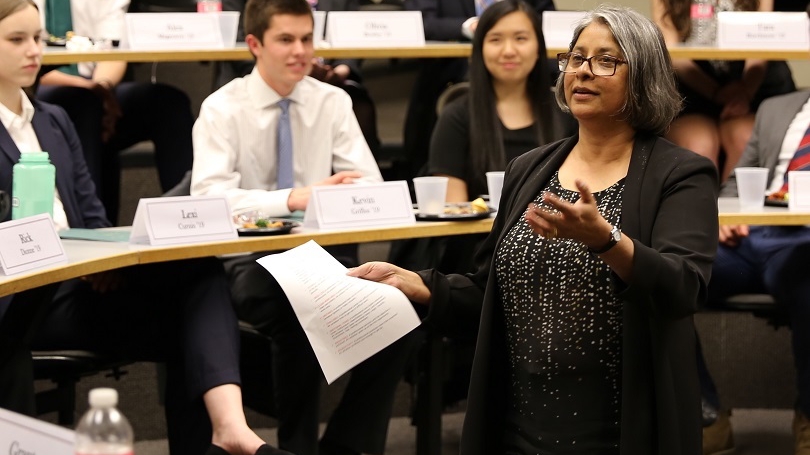
- Public Policy
- Leadership
- Funding
- News & Events
- About the Center
Back to Top Nav
Back to Top Nav
Back to Top Nav
Back to Top Nav
At the most recent Rockefeller Leadership Fellows retreat, Sadhana Hall spoke to us, the Fellows, about creating a leadership presence. Of the many topics she spoke about, her anecdote of authenticity and integrity deeply resonated with me. I interpret someone’s spoken word as truth, but I sometimes give someone my word and have not followed through in the manner I said I would. I’ve never had an instance where my word has a massive impact on someone’s life; (based from the Fellows last session with Jay Davis) I haven’t had the “wisdom from bad choices” with vital matters to make good choices with integrity. In this instance, however, learning from someone else’s experience, we all learned the impact and power our words impact others.
In a similar sense, we also discussed how leadership is not about the individual, but rather about the audience. It’s the leader’s role to first acknowledge this dynamic and second to never lose sight of it. A leader who holds individual goals is only a nominal one. Among many, it takes interpersonal skills, such as listening to understand and empathy, to be an effective leader. Without understanding who people are, what they feel, and how they view the leader, the task at hand will not be achieved to its full potential.
On a different note, I learned about the importance of non-verbal communication. In the seven seconds it takes to make a first impression, 55% of one person’s gauge of another is based from non-verbal communication. While I think this may make some, including me, superficially poised at times, it’s valuable to realize how to be effective when meeting someone. A firm handshake and proper attire can be more meaningful than the topic of discussion. “Tone of voice” constitutes another majority in a first impression, and though I think I have situation-aware tones of voice, this part of a first impression also illuminates the concept of engagement. If someone is not engaged in a meeting or a conversation, his/her tone of voice will dwindle along with non-verbal projections.
- Submitted by Shaun Sengupta '17, Rockefeller Leadership Fellow